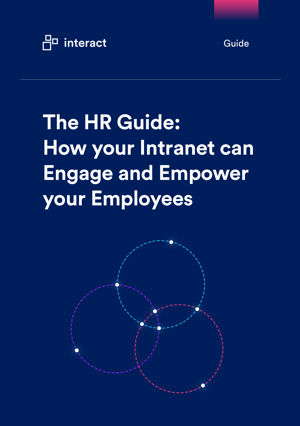Back in 2016, we rounded up the top 5 recruiting trends to watch out for in 2017. From AI to the power of social media, 2017 has transported us one step closer to a fully-realized digital workplace.
As we edge towards the end of the year, we begin to look ahead to 2018 and consider how our modern workplace will evolve even further.
Not only have there been digital advancements, such as the development of bots, there has also been a shift towards a more diverse workplace.
Diversity in the workplace has been under scrutiny in recent years. Several studies have highlighted this issue, such as one study in France which discovered candidates with a foreign sounding names were much less likely to get call-backs from recruiters.
From Google in the US, to the BBC in the UK, many large enterprises have come under fire for having a largely white, male-dominant workforce. Despite improvements in diversity, it’s clear we still have some way to go.
Take Google for example. In 2014 figures were released detailing that its workforce was not only 70% male, but also 61% white. These figures caused outrage, with only 3% of Google employees being Hispanic, and even fewer being blac So, in a society that is attempting to take strides towards equality, how can we begin to resolve this issue?
So, in a society that is attempting to take strides towards equality, how can we begin to resolve this issue?
Well, one practice that large organizations, such as KPMG, Deloitte, and HSBC, are beginning to employ is blind recruitment.
Get the most from your intranet
What is blind recruitment?
Simply put, blind recruitment is the practice of erasing certain qualities from a resume which may cause bias from employers. Personal information, such as name, age, gender, education and even years of experience, are stricken from candidate resumes, with the emphasis put on job-related, transferable and adaptive skills.
Blind recruitment aims to remove unconscious bias from managers, and allows staff to be hired based purely on merit. Through its practice, each job applicant will be fairly considered on a level playing field, leading – at least in theory – to organizations creating a more diverse workforce.
The issue of diversity
In the US, The National Bureau of Economic Research found that, despite laws against discrimination, “job applicants with white names needed to send about 10 resumes to get one call-back; those with African-American names needed to send around 15 resumes to get one call-back.” Researchers also discovered that “African-Americans are twice as likely as whites to be unemployed and they earn nearly 25 percent less when they are employed.” (NBER)
Such statistics highlight the urgent need for blind recruitment or other strategic steps to address the issue of unconscious bias within the recruitment sector in the US. However, it is also an issue on the other side of the Atlantic. Its necessity in the UK is highlighted in the below infographic by Market Inspector, which details ethnic diversity in Britain. BME (black and minority ethnic) citizens only make up 10% of the workforce, with even fewer holding top management positions. (Source: Market Inspector)
(Source: Market Inspector)
Unfortunately, these types of statistics are not uncommon for many organizations, all over the globe. Sparked by Google’s transparency, the employment-orientated social networking service, LinkedIn, published its diversity stats in 2014.
The graph, while marginally better than Google, still highlights the issue of diversity in the workplace. More than half of its employees globally were male, and over 50% of US employees were white.
Dig deeper, and it was clear diversity figures were even more questionable when filtered by occupation or level of seniority; when separating out STEM-related roles, just 17% were occupied by women. A similar picture was highlighted at management level, with just 25% of roles occupied by women, and a continued dominance of 65% of management roles going to white employees. Indeed, Pat Wadors, Vice President Global Talent Organization of LinkedIn at the time, admitted that the company “had some work to do”.
In the post publicizing the statistics, Wadors continues that LinkedIn has initiated programs and developed partnerships in a bid to close the gaps. However, upon reflection of the company’s 2016 statistics, it appears that it still has its work cut out.
Perhaps, the solution to this issue of diversity is blind recruitment?
Advantages
There are certainly a number of advantages when it comes to the new recruitment practice.
1. More choices for both employer and employee
Some candidates may be put off from applying to certain job opportunities due to prejudices by employers. Whether it’s their name, age, gender, ethnicity or background, by eliminating these factors, employers could find a higher number of applicants meaning more chance of finding the ideal employee.
2. Helps to diversify workforces
Along with the other benefits a diverse workforce brings, such as increased language skill, it has also been reported that “increasing gender diversity by just one percent will boost your bottom line by three.” What’s more, if there is just a one percent rise in race equality, it can increase revenue by nine percent. (Recruitment Software).
3. Emphasis on skill
By putting the emphasis on skill, it ensures the best candidates are selected to interview, and ultimately to get the job. Each candidate is on a level playing field, there are no discriminations, and each person has an equal opportunity to impress the employer with their skillset.
4. Potential to increase competency in the workplace
Focusing on skill in the initial interview stages has a domino effect on the final workforce. Employees have been chosen for their skill set, therefore blind recruitment has the ability to increase competency in the workplace. This method could decrease other metrics in an organization, such as productivity rates and staff turnover.
Disadvantages
Of course, nothing is perfect and blind recruitment is no exception. The practice certainly has its limitations which may decrease its value in the workplace.
1. Delay in discrimination
It is unlikely that a candidate won’t be interviewed face-to-face at some point throughout the recruitment process. While blind recruitment is an excellent method to reduce initial discrimination, it could actually simply delay it, reducing its effectiveness.
2. Lower morale with recruiting staff
There is the argument that blind recruitment may lower morale among recruitment staff. They may feel like managers don’t trust them to make the correct and just decision. There is potential that recruitment professionals feel that managers are accusing them of holding a bias.
Is blind recruitment the answer to diversity challenges in the workplace?
All in all, blind recruitment is definitely a step in the right direction towards a more diverse workplace. While it still has its limitations, it’s important to note that the practice is in the teething period. The more organizations deploy such a practice, the more opportunities there are for minority staff, resulting in an equal and diverse bunch of people.
The answer may lie in embedding the practice of blind recruitment alongside other initiatives designed to identify – and eliminate – bias occurring during the recruitment process and within the workplace overall. Investment in training and awareness for hiring managers, transparency and reporting on internal workforce demographics and embedding inclusivity into business culture are all essential elements that could support a more diverse workforce.
Furthermore, research has shown that bias may occur long before individuals reach employment age, particularly in STEM industries or the financial sector. The suggestion is that gender or race bias occurs as early as school age: according to the OECD (OECD, 2015) despite similar performance when tested, 1 in 5 boys would consider a STEM career, in stark contrast to 1 in 20 girls. This translates into subsequent education decisions, with fewer women opting for STEM subjects at college degree level. It is essential that organizations operating at the top level within under-represented industries in terms of diversity play a more active role in attracting talent into their field. This may be through awareness or school outreach programs, apprenticeships, or sponsorship, training, and summer school programs designed to raise awareness.
It is essential that organizations operating at the top level within under-represented industries in terms of diversity play a more active role in attracting talent into their field. This may be through awareness or school outreach programs, apprenticeships, or sponsorship, training, and summer school programs designed to raise awareness.





